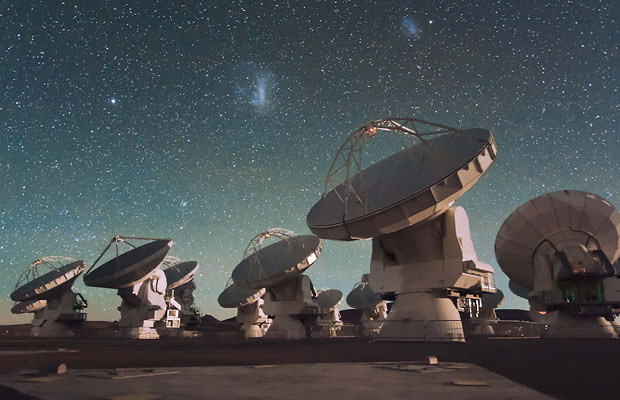Friday, August 26, 2016
Life Could Have Started In Space Molecule Discovery Suggests

The largest and most complex organic molecule ever seen in interstellar space has been detected by the Atacama large Millimeter/submillimeter Array (ALMA Telescope). the molecule, isopropyl cyanide, was spotted 27,000 light-years (10 trillion kilometres) from earth, inside a star-forming giant gas cloud named sagittarius B2.
As stars are born in the cloud, they heat up microscopic grains of dust. chemical reactions on the surface of this dust can result in the formation of complex molecules. Various types of molecule have previously been detected in space. But hydrogen-rich organic molecules – such as those most closely related to the ones necessary for life on earth – appear to be most plentiful in the gas clouds from which new stars are being formed. the discovery of isopropyl cyanide in interstellar space suggests that the building blocks of life may be widespread throughout our Galaxy.
 |
| The central region of the Milky Way can be seen above the antennas of the ALMA observatory in Chile. |
since the search for molecules in interstellar space began in the 1960s, around 180 kinds have been discovered. each molecule emits light at particular wavelengths, giving it a unique pattern of electromagnetic radiation that acts as its ‘signature’. these signatures can then be detected using a radio telescope, allowing researchers to determine the composition of interstellar space.
“understanding the production of organic material at the early stages of star formation is critical to piecing together the gradual progression from simple molecules to potentially life-bearing chemistry,” says lead author Arnaud Belloche.
the discovery could mean that more complex organic molecules, such as amino acids, may also be present in interstellar gas clouds. Amino acids are the key ingredients of proteins, which played an important role in the evolution of life on earth.
“Amino acids identified in meteorites have a composition that suggests they originate in the interstellar medium," adds Belloche. “Although no interstellar amino acids have yet been found, chemistry may be responsible for the production of a wide range of complex molecules that eventually find their way to planetary surfaces.”
References:
- Detection of a branched alkyl molecule in the interstellar medium (The research is detailed in the journal Science)
- Wikipedia: Atacama Large Millimeter Array (ALMA)
Subscribe to:
Post Comments (Atom)
No comments:
Post a Comment